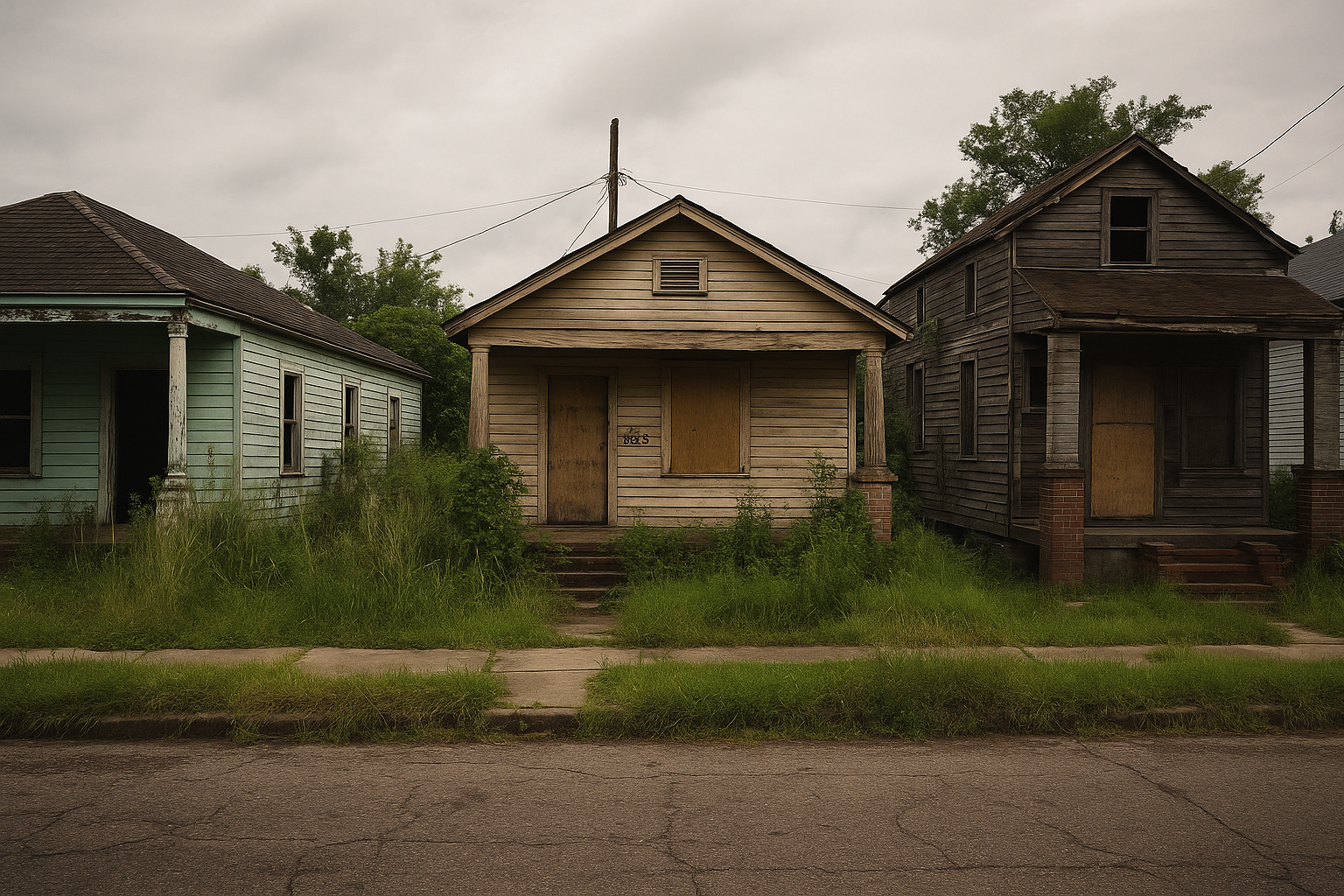Katrina’s Shadow: Why New Orleans Still Struggles with Insurance, Blight, and Recovery
Hurricane Katrina struck New Orleans in 2005. Nearly twenty years later, the storm’s damage continues to shape the city. Residents rebuilt, but the recovery remains uneven.
A Smaller City, Higher Costs
New Orleans is smaller today. The population dropped after Katrina and never fully returned. Families moved away and never came back.
At the same time, the cost of living soared. Insurance premiums skyrocketed. Flood insurance became mandatory for many homeowners. Renters faced the same pressure as landlords passed on higher costs.
Living in New Orleans now costs more, even though the city is smaller.
Blight Remains a Scar
Katrina left behind thousands of abandoned houses and vacant lots. Entire blocks in the Lower Ninth Ward and New Orleans East still struggle.
Blight drags down property values. It fuels crime and weakens neighborhood pride. Residents who rebuilt live with daily reminders of an unfinished recovery.
The city has cleared many blighted properties, but the pace is slow. The problem still defines too many neighborhoods.

Fragile Infrastructure
Katrina revealed how fragile New Orleans’ infrastructure was. Levees broke. Pumps failed. Basic systems collapsed.
Two decades later, problems remain. The Sewerage and Water Board struggles with broken pumps and aging pipes. Boil-water advisories are routine. Streets crumble with potholes.
Billions were spent upgrading levees. Yet confidence in the system is shaky. Residents still ask: if another Katrina strikes, will New Orleans survive?
Housing Market Shift
Katrina destroyed more than 100,000 homes. Many were affordable rentals. Rebuilding replaced them with higher-cost developments.
Gentrification swept through Tremé, Bywater, and Central City. Wealthy newcomers moved in. Long-time families were priced out.
Affordable housing vanished. Combined with high insurance costs, staying in New Orleans became harder for working-class residents.
The risk is clear: the city may lose its diversity and character if families continue to leave.
Economic Struggles Continue
Katrina wrecked the city’s economy. Businesses closed. Workers scattered.
Tourism eventually rebounded. But small businesses never fully recovered. Neighborhoods outside Uptown and the French Quarter still lack investment.
New Orleans relies too heavily on hospitality. Jobs are uneven. Poverty rates remain high. The wealth gap widened. Black families, in particular, lost generational wealth and never regained it.
Resilience or Excuse?
New Orleanians are known for resilience. They have endured Katrina, the BP oil spill, and Hurricane Ida. Music, food, and culture remain vibrant.
But resilience has limits. Constant survival wears people down. Many argue that “resilience” is now an excuse. It praises endurance while ignoring broken systems.
The Work Ahead
To move forward, New Orleans must act. The city needs solutions, not slogans.
- Fix the insurance crisis
- Invest in infrastructure
- Eliminate blight faster
- Expand affordable housing
Katrina exposed government failures. Those failures cannot be repeated.
Final Thoughts
Katrina’s shadow is long. New Orleans has survived, but survival is not enough. The city must fix what the storm exposed.
Culture and spirit keep New Orleans alive. But without real solutions, the city risks losing the very people who make it unique.

